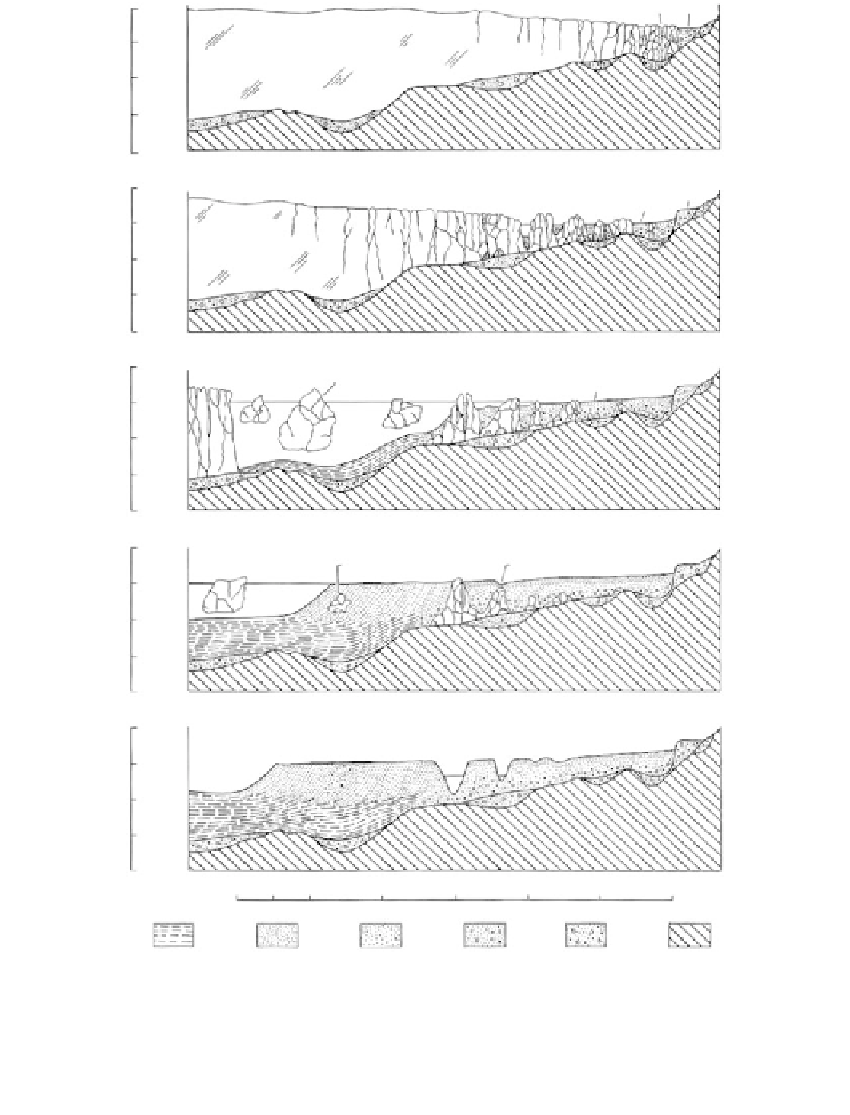Environmental Engineering Reference
In-Depth Information
Feet
W
A
E
Cf
Kt
400
300
Valley
ice mass
200
100
Sea
level
400
E
W
B
Kt
Tb
300
Valley
ice mass
200
100
Sea
level
400
E
W
C
Berg
Tb
300
Valley
lake
200
100
Sea
level
400
E
W
D
Kettle
Berg
300
Valley
lake
200
100
Sea
level
400
W
E
E
300
200
100
Sea
level
0
1000
′
2000
′
3000
′
4000
′
5000
′
6000
′
Varved clay and silt
Sand and /or silt
Cf - Crevasse filling
Sand and fine gravel
Gravel, mostly coarse
Till
Bedrock
Kt - Kame terrace
Tb - Tributary deposits
FIGURE 7.90
Suggested depositional sequence of outwash in the Connecticut River Valley. (From Thornbury, W. D.,
Regional
Geology of the Eastern U.S
., Wiley, New York, 1967. With permission.)
Varved Clays
Deposition
The typical infilling of glacial lakes is varved clay, or alternating thin layers of clay and silt
with occasional sand seams or partings as shown in
Figure 7.92.
The varves are climatic in
origin; during the summer months, meltwaters entered the lake carrying fine sediments
which were distributed throughout the lake in suspension. The silt settled to the bottom


